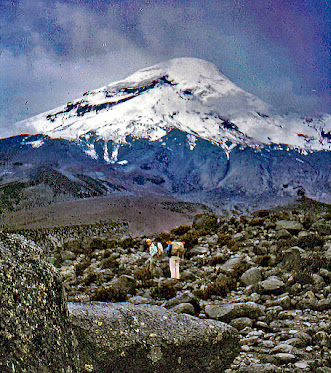 |
| Coastal Dry Forest with Ceibo Trees standing as sentinels |
Ecuadorians have protected the
Ceibo tree for centuries. Even now, as coastal dry forests are
slashed and
burned, Ceibo trees remain alone and in pairs, standing guard like
soldiers on
the heights of coastal hillsides. The Ceibo tree, the 'redwood' of the 'La Costa' forest, has adapted to
periods of
drought, appearing dead in the dry season and sending a spectacular
display of
fresh green leaves and bright white flowers after heavy rains.
La Costa Forests
The western coastal area of Ecuador ("La Costa") is the site of the Pacific Equatorial Forest whose forest remnants are
considered the most endangered tropical forest in the world. La
Costa is one of the four natural regions into which Ecuador is divided.
The other three are the Sierra (the Andes Mountain Range), The Oriente
(the lowland Amazon forest east of the Andes), and the Galapagos islands
in the Pacific Ocean. Some 75% of the original native forest has been lost.
La
Costa encompasses a broad coastal plain, along with some small
mountain ranges, extending from the Pacific Ocean on the west to the
foothills of the Andes Mountains
to the east. It is estimated that a majority of the native forest that originally covered coastal Ecuador
has been eliminated in favor of cattle ranching and other agricultural pursuits; including cacao, palm, banana and coffee plantations. Some remaining forest is part of
the Tumbes-Choco-Magdalena biodiversity hotspot.
The vast majority of the Pacific Equatorial Forest
remains unprotected and continues to be logged and cleared for
agriculture and cattle ranching. In 2009 the Ecuadorian Ministry of the
Environment launched its Socio Bosque (Forest Partners) program,
which provides forest owners with an annual conservation subsidy of $30
per hectare ($12/acre). Long-term success is uncertain.
The Ride
 |
| Note the rugged terrain east of Independencia where the ride probably occurred |
The
satellite image below (click on it to make it larger) shows
Independencia. It appears to have grown considerably larger than a hamlet in the
50+ years since I rode the trail to La Deliciosa. The rural
area around the village shows some remaining original forest or
rejuvenated second growth forest. Lands converted to agriculture indicate a
variety of uses. Grasslands for cattle or other grazing animals appear
to be the most common.
The
most recent conservation innovation is the use of drones. At least one
organization in Ecuador is implementing drone technology to assist
their conservation
efforts. Initial plans are to use drones for monitoring the
area for illegal logging activities. Another possible drone activity could
be monitoring reforestation efforts. CEIBA, is working hard and committing resources to preserving the coastal forest.










